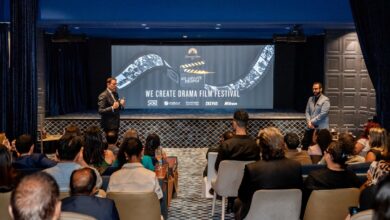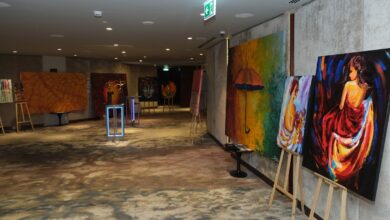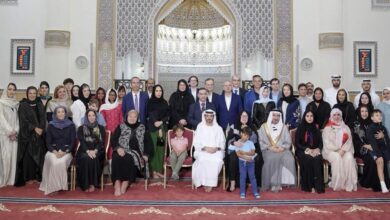Ministry of Heritage and Tourism activates the role of museums in promoting knowledge and sciences among researchers and visitors
Riya bint Mohammed Al Kindi: The celebration aims at raising awareness about museums as important institutions for cultural exchange, strengthening mutual understanding and cooperation between peoples
Muati Al-Muati: The Sultanate of Oman since early ages
paid attention to promote museums where caring for cultural heritage on top of priorities ,
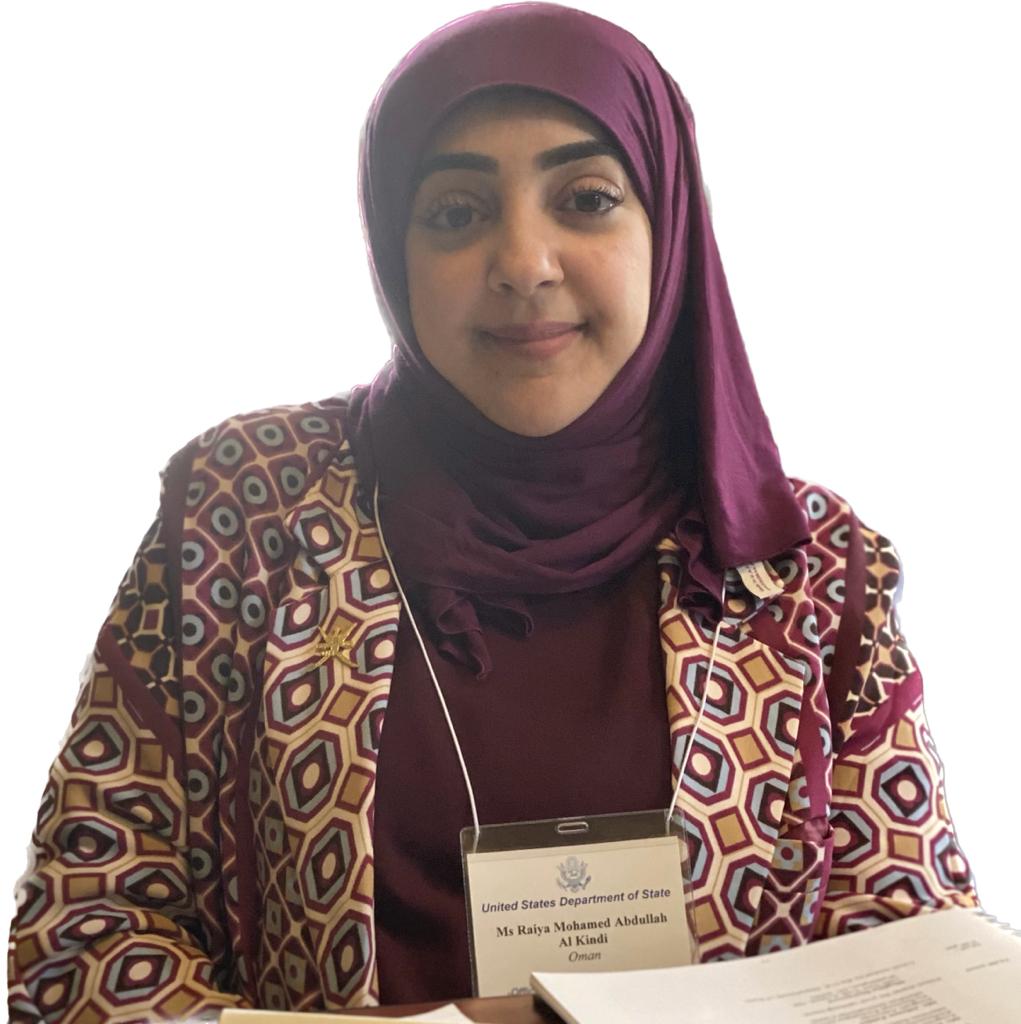
Riya bint Mohammed Al Kindi, Director General of Museums at the Ministry of Heritage and Tourism
Represented by The Ministry of Heritage and Tourism (MHT), The Sultanate of Oman celebrates on Thursday, the International Museum Day, which falls on 18th May of every year.
This year celebration comes under the theme of “Museums, Sustainability and Well-Being”, a slogan announced by the International Council of Museums, to highlight the potential of museums around the world explore their positive impact on societies,
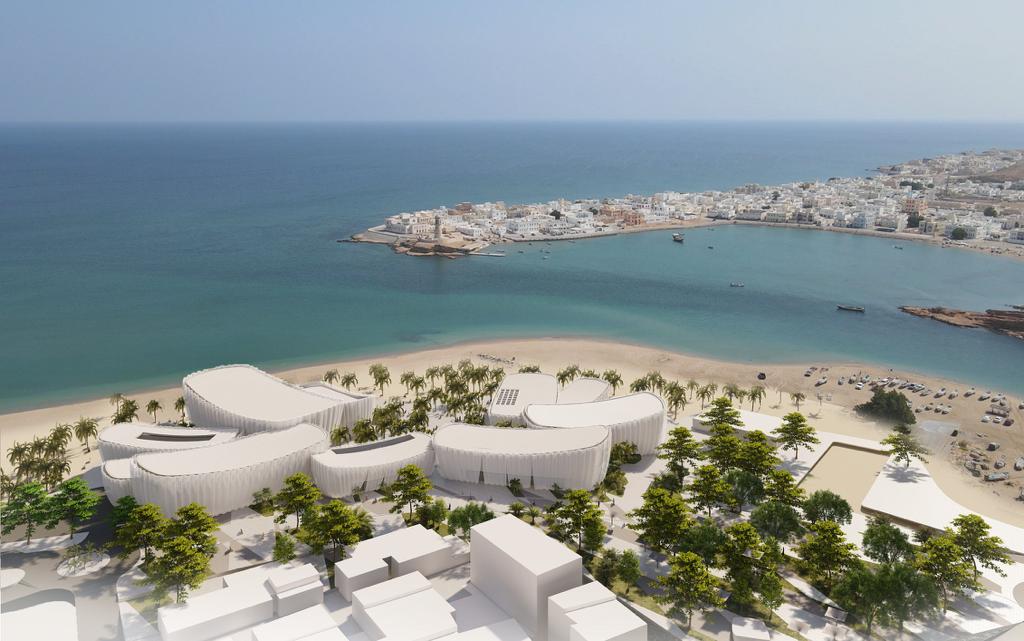
The exploration of the positive impact of the museums can be achieved through three elements , including the power of sustainability in Implementing the United Nations goals of the sustainable development, increasing awareness about the environmental challenges, and the innovation in digitization in order to take advantage of modern and advanced technologies to facilitate visiting museums and to develop the societies through education and via providing learning opportunities and achieving equality between them.
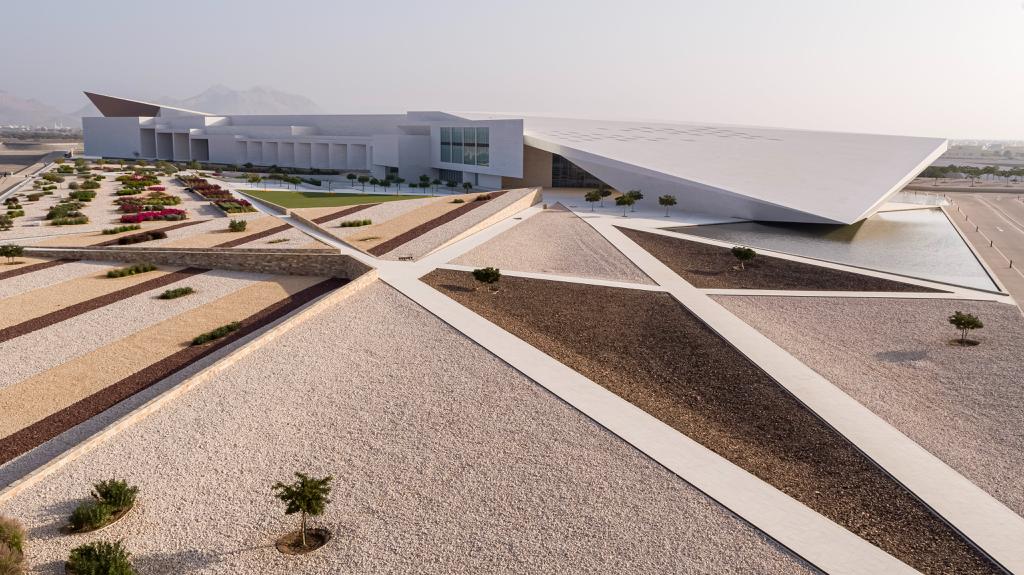
The Ministry of Heritage and Tourism exerts its efforts to activate the role of museums in promoting knowledge and sciences among researchers and visitors, while the museums are considered as important knowledge tributaries that contribute to achieve many of the strategic programs of the Tenth Development Plan and the Oman Vision 2040.
The museums also considered as one of the means aims at preserving cultural heritage, ensuring its sustainability in creating direct and indirect job opportunities, and contributing to the promotion of local content, and dedicating its role as one of the tourist destinations, that the ministry seeks to develop and modernize, it through a number of projects, as museums are attracting large numbers of visitors.
The official statistics issued in 2021, showed that, the number of visitors to government and private museums in the Sultanate of Oman, reached to about 115,255 thousand visitors.
Riya bint Mohammed Al Kindi, Director General of Museums at the Ministry of Heritage and Tourism, stated that “The Sultanate of Oman’s celebration coincided with the world’s celebration by International Museum Day, which comes this year under the slogan of “Museums, Sustainability and Well-being”.
She added: The celebration of this day was approved by the International Council of Museums (ICOM) in 1977 and aims at strengthening awareness about the fact that museums are important institutions for cultural exchange, enriching cultures, and developing mutual understanding and cooperation between peoples.
She clarified that on this celebratory day, the museums seek to present creative events and activities related to the theme of the celebration, and to interact with the public, in order to highlight the importance of the role of museums as institutions that serve society and work on its development, while the theme of this year’s celebration confirms that all museums play a role in shaping and creating a sustainable future through educational programs and exhibitions, as well as the International Museum Day is supporting a set of United Nations Sustainable Development Goals since 2020.
The Director General of Museums pointed out that , in 2023 , it has been decided to focus on the following goals: The first goal: is the to strengthen the global health and well-being: ensuring a healthy life and promoting well-being for all people at all ages, in particular that elements related to the mental health and social isolation.
The second goal is the climate action: To take urgent measures to combat climate change and its effects, and adopting low-carbon practices in the northern region countries, as well as adopting mitigation strategies in the southern region countries.
The third goal is the Life on Earth: To protect, restore and promote sustainable use of terrestrial ecosystems, raising the voices of indigenous leaders and raising awareness about biodiversity loss.
Riya Al-Kindi also referred to the efforts of the Ministry of Heritage and Tourism during the period of the Covid-19 pandemic and the plan to recover from the pandemic, while museums, like other affected sectors, faced a number of challenges during that period as a result of the pandemic.
She pointed out that, through the recovery plan, the Ministry has sought to accelerate the recovery of the tourism sector from the repercussions of the pandemic, by stimulating the domestic tourism, as the competent directorate at the Ministry of Heritage and Tourism is working on a number of projects, including upgrading the museum display of the Land of Frankincense Museum, to achieve sustainability for the site, developing the local community, and keep pace with major updates.
In the field of museums also , the concern department works to highlight the heritage in the most beautiful and interactive way, where the internal content of the museum halls will be developed, designs and display methods will be prepared, new interactive means will be introduced, the security system will be strengthened and upgraded, in addition to establishing museum exhibition halls in a number of castles and forts to encourage visiting the restored historical monuments, and to introduce visitors to the historical and archaeological contents of these monuments.
The Ministry also keens to support the private museums and heritage houses in order to revitalize them as attractive tourism destinations, preserve their holdings from threats, and revitalize local communities that surrounding the private museums.
As for the importance of establishing new museums and developing the existing ones, the Director General of Museums referred to the new project of the Natural History Museum, clarifying that the Natural History Museum was opened in 1985 , where the museum displays geological heritage and environmental diversity.
She added : In view of the need to develop and expand the Natural History Museum in order to keep pace with the development of contemporary museum styles, The Ministry is implementing an ambitious plan to build a modern version of the museum in cooperation with a number of leading institutions in this field in line with the strategic programs that are implemented during the tenth development plan, as the museum, when completed, will constitute a qualitative addition in the region and in the museum system in the Sultanate of Oman.
She also clarified that, when the development of this museum is completed, it will constitute a qualitative addition to the Omani museums system in the region.
She pointed out that, the project to establish the Maritime History Museum is one of the projects that the Directorate is currently implementing to execute the strategic programs of the tenth development plan for Oman 2040 vision.
She added: The implementation of this project comes to introduce the Omani maritime history through a collection of museum holdings and means of interpretation that embody the Omanis’ experience and achievements in maritime navigation and Oman’s relations with various countries and civilized regions throughout history.
The Director General of Museums clarified that, the establishing of this project witnessed the hosting of a number of specialized international houses of expertise known for their pioneering museum experiences, while a number of workshops and meetings were organized, in addition to holding meetings and workshops with national expertise.
She pointed out that , the master plan for the project was prepared with the Galata Maritime Museum in the Republic of Italy, which includes spatial visualization, components, multimedia applications, a conservation and preservation program, as well as professional studies in the field of services, operation and management.
With the sublime blessing of His Majesty the Sultan, the second round of the Bilarab bin Haitham Award for Architectural Design was launched on 10TH October 2022, dedicated to the design of the Maritime History Museum project, while the winning design was announced on 28th February 2023, and accordingly, the Ministry of Heritage and Tourism is currently embodying this interest in implementing the process of the project including the preparing of a tender document for the provision of consulting services for the preparation of detailed designs for the construction of the museum.
The project to rehabilitate Sohar Fort Museum is also one of the most prominent development projects during this stage, as the museum was inaugurated in 1992, with the aim of highlighting the history of the city of Sohar, its historical landmarks and its civilized relations with the world, and what it was famous for in the field of trade and maritime leadership.
The Ministry is currently preparing a plan for the rehabilitation and development of the museum, that after the completion of the restoration work in the Fort and the rehabilitation of its various facilities as well.
For his part, Muati bin Salem Al Muati, Assistant Director General of Museums at the Ministry of Heritage and Tourism, stated that the Sultanate of Oman since early ages paid attention to promoting museums where caring for cultural heritage at the top of priorities and since the beginning of the blessed Renaissance, the interest in cultural heritage is considered as one of the most important priorities that have resulted in the presence of a number of archaeological missions in various sites to reveal the most important archaeological finds in the Sultanate of Oman, with the aim of displaying them later in a museum system that is in line with the Omani cultural history that to ensure its sustainability in accordance with best practices.
The opening of the Natural History Museum in 1985 is the best evidence of these serious endeavours and ambitious efforts to seek from an early age to benefit from the cultural and natural heritage as a tourist and knowledge destination that supports many scientific teams, universities and research institutions.
The Sultanate of Oman abounds in many museums containing great treasures, the most prominent of which is the Oman Across Ages Museum, which was inaugurated under the patronage of His Majesty Sultan Haitham bin Tariq – may Allah protect and preserve him. It is located in the Wilayat of Manah in the Governorate of A’Dakhiliyah.
The Oman Across Ages Museum, tells through time the history of the land of Oman more than 800 million years ago, and the history of man on this land, that in accordance to what was proven by scientific reports and research that were carried out during the different time periods up to the era of the blessed Omani renaissance.
The National Museum of Oman is one of the most prominent cultural edifices in the Sultanate of Oman, it dedicates to highlight the contents of the cultural heritage of Oman.
The National Museum was founded by Royal Decree No. ( 62/2013), promulgated on (16 Muharram 1435 AH), corresponding to (November 20th, 2013).
The museum aims at achieving its educational, cultural, and humanitarian mission by consolidating the noble Omani values, activating belonging, and raising public awareness among the citizen, residents, and visitors, for the sake of the Sultanate of Oman, its history, heritage, and culture.
All these objectives are embodied in: First: display the museum show experience in (14) halls, which include more than (7000) distinguished and carefully selected finds, and (33) digital interactive display systems.
The National Museum of Oman also includes a learning centre equipped to the highest international standards, preservation and preventive conservation facilities, and fully equipped laboratories. It also includes an audio-visual exhibition hall; With (UHD) technology, it is the first museum in the Middle East to employ the “Braille” system in the Arabic language, in addition to the presence of an open warehouse system.
The Museum od the Frankincense Land , which is located in Al-Baleed Archaeological Park in the Governorate of Dhofar, which was officially inaugurated on July 23, 2007, it currently includes a comprehensive view of the ancient history of Oman through different ages.
The museum consists of two exhibition halls, the Maritime Hall and the History Hall. The History Hall consists of six sections: (Oman’s geography and topography, Oman in ancient times, the land of frankincense, the Islam of the people of Oman, features of Omani history, the section on temporary exhibitions), while the Maritime Hall includes seven sections, which are (maritime heritage, the sea, building boats and sailing ships, sailing, trade, virtual sea reality, modern Oman renaissance.
The opening of the Fath Al-Khair Center in the Wilayat of Sur in November 2021 comes to highlight the components and importance of the Omani cultural heritage and the maritime heritage in the city of Sur in particular and to enhance public awareness among the visitors and the resident.
The second maritime heritage and the third hall display everything related to the Fath Al-Khair ship (the last Ganja in the Sultanate of Oman), while the fourth hall is dedicated to displaying the holdings of the Souri House, intangible cultural heritage, costumes, and some miscellaneous pictures.
The fifth hall was dedicated to the Sinbad Hall, which aims to provide an educational environment for children and organize educational workshops, in addition to displaying some miniature models of the collections inside the museum, through which children can interact with them and reinstall them. The outer yard of the centre also contains the Fatah Al-Khair ship, in addition to a number of other Omani boats.
The Natural History Museum is also considered one of the most important Omani museums, as this museum includes exhibits representing various aspects of life since its appearance in its various forms on the land of Oman.
Among the rare exhibits displayed by this museum are the remains of a fossilized tree found in the Al-Haqf region dating back to 260 million years ago, in addition to the remains of fossilized coral dating back to about 270 million years old and found in Wadi Al-Sahtan in the Wilayat of Rustaq, as well as the remains of a tooth jaw belonging to one of the types of monkeys.
The museum also contains some aspects of life of various reptiles and types of butterflies in their beautiful colors, as well as other living creatures that live in the wilds of the Sultanate, and many remains of trees and fossilized bones.
There is also a whale hall in the Natural History Museum, which displays a 14-meter-long skeleton of a sperm whale, skeletons and skulls of some types of whales.
As for the Omani-French Museum, this museum is located in the city of Muscat, close to the Al-Alam Palace in the Wilayat of Muttrah, Governorate of Muscat. It is located in one of the ancient houses, which is more than 170 years old.
Sultan Faisal bin Turki gifted this house to the first consul of France in Muscat, to be the headquarters of the French consulate, and that was in the year 1896.
Postage stamps and a hall for the traditional costumes and jewelry of the Omani coastal cities such as Muscat, Salalah, Sur and the Wilayats of of Al-Batinah, as well as French costumes from the cities of Marseille and Lorient, which had many commercial exchanges with Muscat.
In addition to all that ,, some pictures of daily scenes in Muscat during the fifties are displayed in the museum, which are matched by scenes of daily life in French Brittany in the period from 1910 to 1912 .
As part of its plan to develop the museum, the Ministry is implementing a number of Museum maintenance and development programs in accordance with international best practices.
The Ministry assigned the work of the first phase of the restoration and maintenance of the Omani-French Museum building. This stage includes the implementation of the work of removing the outer cladding of the walls in order to stand in accordance with the best international practices followed in the process of restoring and maintaining historical buildings.
The Ministry had previously carried out laboratory tests for the building, its loads and its structural condition, and accordingly, the appropriate work mechanism and scope of work was set that are in line with the nature of the building and the most important ways to ensure its sustainability.
The Ministry also intends, through the proposed restoration process, to ensure the reuse of traditional materials and methods of construction and restoration adopted in ancient buildings, in a way that preserves the originality and integrity of the building in the future. This project is part of the ministry’s efforts to develop and rehabilitate existing museums, in order to achieve Oman’s Vision 2040 and its strategic programs.
The Sultan’s Armed Forces Museum, which was officially opened on 11 December 1988 in Bait Al-Falaj Fort, which was restored and renovated during the era of the modern Omani Renaissance, is a view of the military history of Oman through its various stages, from the pre-Islamic period to the Renaissance era, through the halls of the museum and the weapons it contains. historical pictures and documents transport the visitor to those ages to witness the story of victories and military events that are told by each of the halls of the museum. It was used in the Sultan’s armed forces, such as vehicles, tanks, planes and ships.
The museum also includes an important collection of exhibits that tell about the luminous military aspects of the glorious Omani history of different stages from pre-Islam to contemporary history.



